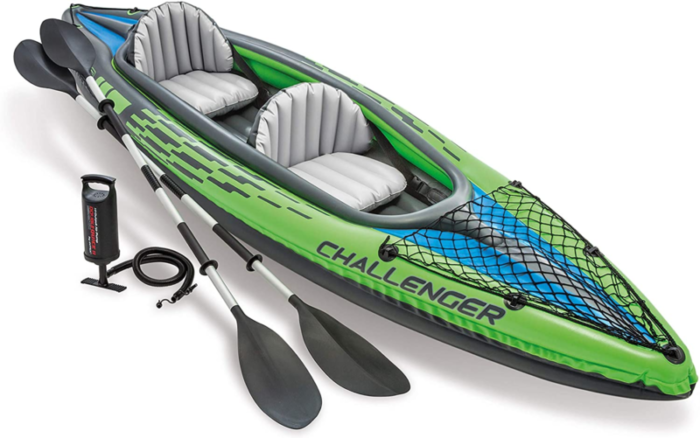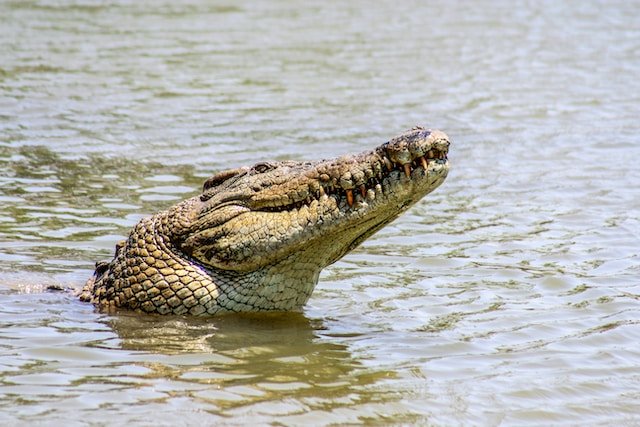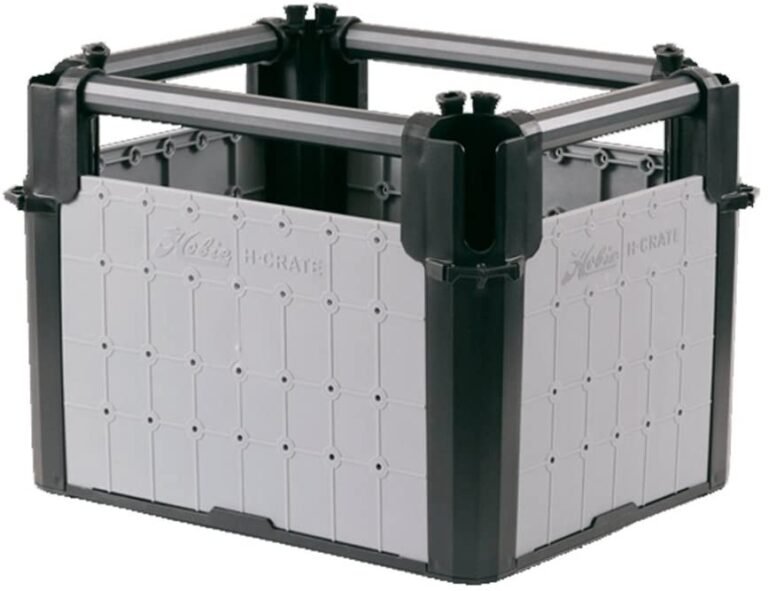Do Inflatable Kayaks Pop Easily?

In kayaking, some people question the durability and safety of inflatable kayaks. In recent times, inflatable kayaks have gained popularity for their portability and ease of storage, but many still question their durability. Inflatable kayaks are durable and can withstand a beating.
These kayaks are not flimsy pool toys you might associate with inflatables. They are constructed from robust materials, such as PVC or Hypalon, and engineered to withstand the challenges of various water environments. However, there are factors that affect the durability of inflatable kayaks.
Types of Inflatable Kayaks
Inflatable kayaks come in a variety of types, each tailored to suit different paddling experiences.
1. Recreational Inflatable Kayaks
These kayaks are designed with a wide hull for stability. They are easy to balance and maneuver making them ideal for beginners and casual paddlers. They are perfect for calm waters, lakes, and slow-moving rivers.
2. Touring Inflatable Kayaks
Touring kayaks are sleeker and offer better tracking and speed. Designed for longer trips and exploration, they often have additional storage space.
3. Whitewater Inflatable Kayaks
Whitewater kayaks are built to tackle challenging whitewater rapids and hence are highly maneuverable and durable. They have reinforced bottoms to withstand the rigors of rocks and rough water.
Advantages of Inflatable Kayaks
The advantages of inflatable kayaks have contributed to their growing popularity among kayakers. The portability of inflatable kayaks is the major advantage. This portability makes inflatable kayaks easy to transport, travel with, and store.
The challenge of lifting and moving kayaks often encountered with rigid kayaks is circumvented. An inflatable kayak is lightweight and compact. It can fit into a backpack when deflated making them easy to transport and store.
The compatibility of inflatable kayaks makes them perfect for those with limited storage space. They also make it possible to explore waters that might otherwise be difficult to explore due to the difficulty in the transportation of hard-shell kayaks.
Another advantage of inflatable kayaks is storage space. They do not require a dedicated storage space. Inflatable kayaks are easy to store as space is not a limitation.
Purchasing a hard shell kayak can be expensive. Inflatable kayaks are more affordable making it easy for new paddlers to explore kayaking without breaking the bank. They are good alternatives for budget-conscious paddlers.
Materials Used in Inflatable Kayak Construction
Inflatable kayaks are manufactured from a variety of durable materials, each with its unique strengths.
PVC (Polyvinyl Chloride)
PVC is a popular choice for the construction of inflatable kayaks. It is affordable, lightweight, flexible, and abrasion-resistant. Kayaks made of PVC are generally budget-friendly and can withstand mild to moderate conditions.
Hypalon (Chlorosulfonated Polyethylene)
Hypalon is known for its exceptional durability and resistance to UV rays and chemicals. Hypalon kayaks are robust and can endure more challenging environments, including exposure to the sun and saltwater. They are often used in high-end inflatable kayaks.
Nitrilon
Nitrilon is a synthetic rubber material that offers a compromise between PVC and Hypalon. Kayaks manufactured using nitrilon are puncture-resistant, environmentally friendly, and less susceptible to damage from UV rays. They are highly durable and cost-effective.
Factors That Affect Durability In Inflatable Kayaks
No kayak is foolproof. Hard shell kayaks can be punctured as well. Certain factors affect the durability of kayaks. To ensure the durability of your inflatable kayak the following factors are important.
Quality and thickness of material used
The type and quality of the materials used in the manufacture of an inflatable kayak are crucial to its integrity and durability. High-quality materials, such as Hypalon and robust PVC, are more resistant to wear and tear. Thicker materials generally offer better durability.
The thickness of the fabric used in the kayak’s construction can vary, with more substantial fabrics being more puncture-resistant. However, thicker materials may also add weight to the kayak, impacting portability.
Manufacturing Quality and Techniques
The manufacturing process and craftsmanship play a crucial role in determining how well an inflatable kayak will hold up over time. Kayaks produced by reputable manufacturers using advanced techniques tend to have better quality control and consistency.
Some kayaks are constructed using high-frequency welding, while others use glued seams. Welded seams are usually more robust and less prone to leakage or separation, making them a preferred choice for durability.
Care and Maintenance
After investing in an inflatable kayak made with high-quality materials proper care of the kayak can prolong its lifespan. After each use, rinse the kayak with fresh water especially if used in saltwater.
Avoid the use of abrasive cleaning agents as they can damage the kayak material. Regularly inspect your inflatable kayak for signs of wear or tear.
Check for punctures, tears, or loose seams and fix them promptly to avoid further damage to the kayak. When fixing your inflatable kayak, use the patch kit recommended by the manufacturer. If applied correctly, patches can restore the integrity of your kayak.
Storage
Store your kayak properly when not in use. Avoid prolonged exposure to direct sunlight, as UV rays can weaken the fabric over time. Allow the kayak to dry out before storing. Store in a cool dry place to prevent mold or mildew growth.
Common Causes of Inflatable Kayak Punctures
Inflatable kayaks made of quality materials are strong, durable, and abrasion-resistant but are not foolproof. Understanding the common causes of punctures is crucial for preventing damage and ensuring a safe and enjoyable kayaking experience. The major causes of puncture are:
Contact with Sharp Objects
One of the most common causes of kayak punctures is collisions with submerged rocks and debris. These underwater hazards can be difficult to spot, and even a minor impact can lead to a puncture or tear in the kayak’s material.
In fast-moving rivers, floating debris like logs and branches can be dangerous. A collision with such debris can cause significant damage to the kayak.
Air Pressure
Inflating your kayak beyond the recommended pressure can lead to increased stress on the material, making it more susceptible to punctures. Overinflated kayaks are also less forgiving when they encounter obstacles.
On the other hand, underinflated kayaks have saggy hulls, which can increase the risk of abrasions and punctures when they come in contact with sharp objects.
Extreme Weather Conditions
Prolonged exposure to scorching sun and high temperatures can cause the kayak’s material to become overly pliable, making it more susceptible to punctures while in extremely cold conditions, the material of the kayak can become brittle and less flexible, making it more prone to cracks and tears upon impact.
Wear and Tear
Inflatable kayaks like their hard-shell counterparts undergo wear and tear with use. Continuous use, folding, and unfolding can stress the material, potentially leading to punctures or leaks.
Poor storage practices such as leaving too much air in it while folding them will put stress on the seams increasing material fatigue. It is essential to ensure that the kayak is dry before storing.
How to Prevent Punctures in Your Inflatable Kayak
Punctures in inflatable kayaks can be a hassle and potentially ruin your kayaking experience. To ensure your kayak stays puncture-free, follow these proactive measures to prevent punctures effectively
Choose the Right Kayak for Your Intended Use
Consider the type of water you will be paddling in when choosing an inflatable kayak. Kayaks are designed for different conditions, so choose one that suits your intended use, whether it’s calm lakes, rivers with mild rapids, or challenging whitewater.
Invest in a kayak made from high-quality materials like Hypalon or robust PVC. These materials are more resistant to punctures and abrasions, ensuring greater durability.
Properly Inflate and Deflate the Kayak
Every kayak has its manufacturer’s recommended pressure. When inflating your kayak, abide by the recommended PSI. Excessive air pressure can stress the material while insufficient air pressure can result in an underperforming kayak.
Inflate your kayak in a stable temperature environment. Sudden temperature changes can cause the material to expand or contract, potentially weakening it.If kayaking in hot weather, consider releasing a small amount of air from the kayak once you’re on the water.
This helps prevent the kayak from becoming overly pressurized due to heat expansion. Always carry a repair kit with you on your kayaking adventures. A patch kit and adhesive can be invaluable in case you have a puncture.
Signs of a Puncture in Your Inflatable Kayak
Detecting a puncture in your inflatable kayak early is crucial to prevent further damage and ensure your safety on the water. Here are the key signs to watch for that may indicate a puncture has occurred.
Loss of Air Pressure
A puncture can result in either a gradual loss of air pressure or a sudden loss of air pressure in your kayak. Gradual loss of air pressure is a more common occurrence. One of the tells of a puncture is your kayak feeling softer or less inflated during your paddling trip.
In some cases, a puncture can result in a sudden and noticeable loss of air pressure. You might hear hissing sounds as the air escapes.
Visible Damage or Puncture Marks
Before every trip, check your kayak’s surface for visible damage. Look for scratches, tears, or puncture marks on the material. These marks can vary from small nicks to more significant tears, depending on the severity of the puncture.
Pay close attention to the seams of your kayak. Loose or separated seams can be a sign of damage or stress on the material.
Water Leakage
If you notice that the interior of your kayak is damp, it may indicate a puncture. Check for water pooling inside the kayak or along the seams. Your gear, such as clothing or equipment stored inside the kayak, may become wet even if the puncture is small. Be sure to inspect your gear for signs of moisture.
Changes in Kayak Performance
A puncture can affect the stability and buoyancy of your kayak. If you find it more challenging to maintain balance or notice that the kayak feels less stable, it could be due to air loss from a puncture. Changes in an inflatable kayak’s tracking or steering behavior may also indicate a puncture.
If it becomes difficult to maintain a straight course, there may be an issue with the kayak’s inflation. Reduced air pressure can lead to a decrease in speed, as the kayak loses its hydrodynamic shape. If you notice a significant drop in speed without an apparent cause, you might have a puncture.
If you observe any of these signs during your kayaking trip, it’s essential to address them promptly. Ignoring a puncture can lead to further damage and compromise your safety on the water.
Carrying a repair kit and knowing how to use it can be invaluable in such situations, allowing you to patch the puncture and continue your adventure with confidence.
Repairing Punctures in Inflatable Kayaks
Discovering a puncture in your inflatable kayak can be disheartening, but with the right tools and know-how, you can effectively repair the damage and get back on the water.
Always have a repair kit
Before going on a kayaking expedition, it is important to have a well-equipped repair kit. Your repair kit should include patch kits, adhesives, cleaning solutions, and rubber gloves. Kayaking without a repair kit can compromise your safety while on the water. It is advisable to have multiple patches with you.
Locate the Puncture
If you suspect a puncture while paddling, paddle to shore and locate the puncture. Inflate your kayak and inspect it carefully to locate the puncture. Look for visible damage, puncture marks, or areas where air is escaping.
If the puncture is small and difficult to see, listen closely for hissing sounds or run your hand over the kayak’s surface to feel for escaping air.
Prepare the Damaged Area
Before you begin the repair, deflate the kayak completely. This ensures that the material is flat and that you can work on the damaged area easily.
Use a mild cleaning solution or alcohol to clean the area around the puncture. Ensure that the surface is free from dirt, debris, and any residue that might interfere with the adhesive.
Apply the Patch and Ensure a Proper Seal
Cut a patch from your repair kit. The patch should be large enough to completely cover the puncture with some extra space around it.
Then apply a thin layer of adhesive to both the patch and the damaged area on the kayak. Carefully place the patch over the puncture, ensuring there are no air bubbles or wrinkles in the patch. Press firmly to secure it in place.
Place a heavy object or some weight on top of the patched area to ensure a strong bond while the adhesive dries. Allow it to dry for the recommended time as per the adhesive instructions.
Test the Kayak for Leaks
Before venturing back on the water, test that the puncture is fully sealed and the integrity of the kayak restored. Once the adhesive has fully cured, reinflate the kayak to the recommended pressure.
Submerge the patched area in water and look for any signs of bubbles or air escaping. If there are no leaks, your repair was successful.
When to Seek Professional Repairs for Your Inflatable Kayak
While many punctures in inflatable kayaks can be successfully repaired with DIY solutions, there are situations where seeking professional repairs is the wisest course of action.
Complex or Large Punctures
If the puncture is extensive, involves multiple tears, or has caused structural damage to the kayak, it may be beyond the scope of DIY repairs. Complex damage can compromise the kayak’s integrity, and professional repair is necessary to ensure safety.
Also, punctures that are exceptionally large or involve a long tear across the kayak’s surface can be challenging to repair effectively without professional expertise.
Damage to Multiple Chambers
If your kayak has multiple air chambers and more than one chamber is damaged or leaking, it can be a complicated repair task. Ensuring that all chambers are properly sealed and balanced is crucial for kayak performance and safety.
Inadequate DIY Repair Results
If you’ve attempted DIY repairs and the puncture continues to leak or the patch doesn’t hold securely, it’s a clear sign that professional intervention is needed. Inadequate repairs can worsen the damage and compromise your safety.
Inflatable kayaks are incredibly durable and resilient hence, won’t pop easily. However, they are not impenetrable. Proper care and maintenance play a crucial role in maintaining the kayak’s integrity and improving longevity.






